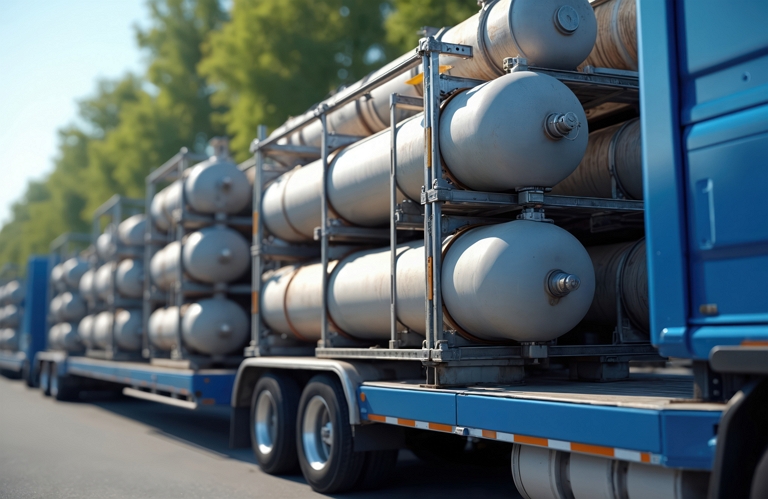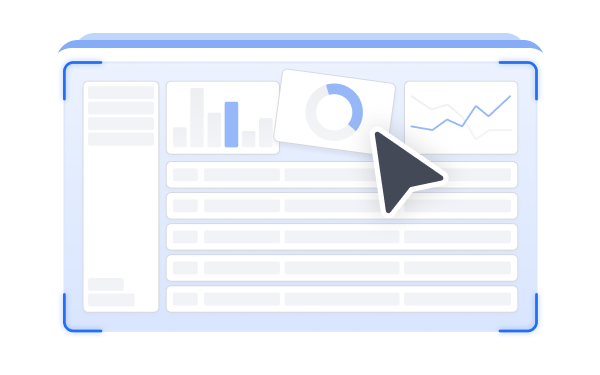In the ever-evolving energy sector, midstream companies play a critical role in connecting upstream exploration and production with downstream refining and distribution. Their responsibilities include transporting, storing, and marketing crude oil and natural gas, two commodities with vastly different logistical requirements.
As global energy demand grows, midstream oil and gas companies are under increasing pressure to streamline operations, reduce costs, and adapt swiftly to market dynamics. This is where AI in oil and gas logistics is making a transformative impact.
Artificial intelligence is no longer a futuristic concept; it is already revolutionizing how the energy industry approaches the complex workflows involved in optimizing crude and gas midstream operations.
From intelligent scheduling and routing to predictive analytics and bottleneck reduction, AI is fundamentally reshaping the future of pipeline infrastructure and logistics management.
#Key Differences in Crude vs Gas Logistics Workflows
Before exploring how AI technologies are being deployed, it's essential to understand the fundamental differences between crude oil and natural gas logistics.
Physical Properties and Transport Needs
Crude oil is a liquid that can be stored relatively easily in tanks and transported via pipelines, rail, or ships. Natural gas, on the other hand, is gaseous under standard conditions, requiring compression (CNG) or liquefaction (LNG) for efficient transportation and storage. These properties necessitate distinct infrastructure, handling processes, and safety protocols.
Infrastructure Design and Capacity Management
Gas logistics involve compressor stations, metering systems, and pressure balancing to maintain flow and safety. Crude oil systems focus more on pumping stations and blending facilities. This leads to different capacity planning and operational considerations.
Scheduling Complexity
Crude logistics often operate on a batch system, where various grades are transported sequentially. Gas transportation tends to be continuous and real-time, demanding more dynamic scheduling and monitoring.
AI's ability to handle and learn from these complexities is why it’s becoming indispensable in optimizing crude and gas midstream operations.
#How AI Optimizes Scheduling, Routing, Storage, and Inventory Management
Midstream logistics require orchestrating multiple moving parts (pipelines, storage facilities, railcars, and tankers) while considering constraints like pressure, temperature, storage capacity and contractual obligations. AI brings unprecedented optimization capabilities to this orchestration.
Intelligent Scheduling and Routing
AI algorithms can analyze historical data, market demand and infrastructure availability to generate optimized schedules and routes.
For example:
Crude logistics benefit from AI-based batch scheduling that minimizes contamination between different grades and reduces downtime between batches.
Gas pipelines leverage AI for real-time flow routing, adjusting compressor loads and balancing pressures to meet fluctuating demand.
AI systems can also adapt routing strategies based on weather patterns, maintenance schedules, and market signals, far beyond the capabilities of traditional SCADA systems.
Smart Storage and Inventory Management
Effective inventory management is a delicate balance: overstocking leads to high holding costs, while understocking risks supply disruption.
AI helps by:
Forecasting demand at each node of the pipeline system
Recommending optimal tank filling strategies to reduce deadstock
Monitoring real-time levels and automating transfer decisions based on throughput and consumption
In crude operations, AI predicts when and where tank storage might reach critical levels and suggests re-routing to avoid bottlenecks.
For gas, AI calculates optimal injection and withdrawal rates from underground storage to maintain grid stability.
To gain a better insight into the visibility and usage of plant data, read the whole blog post on the “Unlocking Plant Data” topic.
#Predictive Analytics for Demand Forecasting and Transportation Planning
The oil and gas industry is notoriously cyclical, influenced by geopolitical tensions, seasonal demand and economic shifts. In this context, AI in oil and gas logistics offers advanced predictive analytics that help midstream operators stay ahead of the curve.
Demand Forecasting
Machine learning models trained on years of consumption patterns, economic indicators and weather data can forecast demand at granular levels. These forecasts guide decisions on pipeline throughput, contract volumes and storage needs.
For example, AI can anticipate gas consumption spikes in residential sectors during a cold winter surge and recommend transportation adjustments days in advance.
Similarly, crude forecasts can prevent the over-scheduling of terminal loading operations when refinery demand drops.
Transportation Planning
AI models simulate different transport scenarios under varying demand, pricing and supply conditions.
These simulations help in:
Planning long-haul pipeline utilisation
Reducing penalty charges by scheduling port arrivals more accurately
Matching asset deployment (e.g., railcars or barges) with volume flows
By integrating with ERP and CRM systems, AI enhances end-to-end logistics visibility, enabling agile decision-making.
To gain further insight regarding predictive analysis in AI, please refer to the following blog: “Leveraging Artificial Intelligence”.
#AI for Reducing Bottlenecks and Improving Flow Optimization
Flow optimization is at the heart of midstream logistics and is one of the most challenging aspects. Bottlenecks can occur due to equipment limitations, maintenance outages or capacity constraints.
Real-Time Monitoring and Flow Adjustment
AI-driven flow monitoring systems use sensor data and digital twins to continuously model the state of pipelines. These models predict potential bottlenecks and autonomously adjust operations to prevent them, such as:
Rerouting crude through underutilized lines
Adjusting compressor stations to equalise gas flow
Managing drag-reducing agents (DRA) in crude pipelines more efficiently
Maintenance and Downtime Reduction
AI-enabled predictive maintenance uses vibration, temperature and acoustic sensor data to forecast equipment failure before it happens. By scheduling proactive maintenance, midstream companies can avoid unplanned shutdowns that disrupt entire logistics chains.
These capabilities lead to smoother operations and significantly lower operational risks, especially in aging infrastructure segments, a major concern for the future of pipeline infrastructure.
For a better understanding related to futuristic pipelines, please refer to the following blog: “Building a Smart Pipeline”.
#Benefits of AI in Oil and Gas Logistics
The advantages of implementing AI go far beyond simple automation. The most significant benefits include:
Increased Efficiency
By automating routine tasks like scheduling, dispatching, and balancing, AI frees up human operators to focus on strategic decisions, making operations leaner and more productive.
Reduced Operational Costs
AI helps optimize energy usage in pump and compressor stations, reduces penalty charges through better planning, and minimizes product loss due to mixing or spills. These factors contribute to substantial cost savings.
Faster Response to Market Shifts
In volatile markets, the ability to pivot logistics plans quickly is critical. AI enables dynamic re-planning based on market indicators, weather and geopolitical events, giving midstream companies a competitive edge.
Enhanced Safety and Compliance
AI systems monitor pipeline integrity, predict failures and ensure adherence to regulatory requirements by generating compliance-ready reports and alerts.
#Real-World Use Cases from Pipeline and Storage Operations
Let’s look at how some companies are already leveraging AI in real-world midstream environments:
Predictive Maintenance at Kinder Morgan
Kinder Morgan, one of the largest energy infrastructure companies in North America, uses AI for pipeline health monitoring. Their predictive maintenance system analyses sensor data to flag anomalies in pumps and valves, reducing unplanned downtime and increasing safety.
Dynamic Scheduling at Enbridge
Enbridge is applying AI to optimise batch sequencing in crude oil pipelines. Their system minimizes product interface loss and ensures timely deliveries, improving both revenue and customer satisfaction.
Gas Flow Optimization at TransCanada (TC Energy)
TC Energy has deployed machine learning models to monitor and adjust gas flows across its extensive North American network. The system dynamically adjusts compressor usage to optimize pressure and reduce energy consumption, significantly improving throughput efficiency.
#The Road Ahead: AI and the Future of Pipeline Infrastructure
The future of pipeline infrastructure will be increasingly digital, interconnected, and intelligent. AI will not only be a tool for optimization but also a core pillar in the next generation of midstream systems.
As companies invest in digital twins, IoT sensors and autonomous operations, AI will drive:
Real-time decision-making across geographically dispersed assets
Improved coordination between producers, transporters and refiners
Resilient logistics networks capable of handling complex energy transitions, including hydrogen and biofuels
AI’s role in optimizing crude and gas midstream operations will only deepen as data becomes more abundant and models become more accurate.
#Conclusion
AI is ushering in a new era for midstream oil and gas logistics; one marked by intelligence, agility and efficiency. By embracing AI-driven solutions, companies can navigate the complexities of crude and gas transportation more effectively, reduce costs and respond faster to shifting market dynamics.
From predictive analytics to real-time flow optimization, AI is becoming a strategic enabler in the journey toward a smarter, safer and more resilient midstream sector.
As the industry continues to evolve, those who invest early in AI in oil and gas logistics will be best positioned to lead the charge into the future of pipeline infrastructure.

Table of contents
- Key Differences in Crude vs Gas Logistics Workflows
- How AI Optimizes Scheduling, Routing, Storage, and Inventory Management
- Predictive Analytics for Demand Forecasting and Transportation Planning
- AI for Reducing Bottlenecks and Improving Flow Optimization
- Benefits of AI in Oil and Gas Logistics
- Real-World Use Cases from Pipeline and Storage Operations
- The Road Ahead: AI and the Future of Pipeline Infrastructure
- Conclusion



